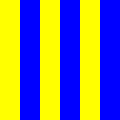Maritime pilot


A maritime pilot, marine pilot, harbor pilot, port pilot, ship pilot, or simply pilot, is a mariner who has specific knowledge of an often dangerous or congested waterway, such as harbors or river mouths. Maritime pilots know local details such as depth, currents, and hazards. They board and temporarily join the crew to safely guide the ship's passage, so they must also have expertise in handling ships of all types and sizes. Obtaining the title "maritime pilot" requires being licensed or authorised by a recognised pilotage authority.
History
[edit]
The word pilot is believed to have come from the Middle French, pilot, pillot, from Italian, pilota, from Late Latin, pillottus; ultimately from Ancient Greek πηδόν (pēdón, "blade of an oar, oar").[2]
The work functions of the pilot can be traced back to Ancient Greece and Rome, when locally experienced harbour captains, mainly local fishermen, were employed by incoming ships' captains to bring their trading vessels into port safely.[3]
The pilot boat was made to quickly reach incoming ships from port. Harbor masters began to require licensing and insured pilots and placed regulations on incoming ships to bring pilots aboard. [3]
Inland brown water trade also relies on the work of pilots known as trip pilots. Due to the shortage of qualified posted masters, these independent contractors fill the holes in the manning schedule on inland push boats on various inland river routes.[4]
A Sandy Hook pilot is a licensed maritime pilot for the Port of New York and New Jersey, the Hudson River, and Long Island Sound. Sandy Hook pilots have been piloting ships in the New York Harbor for over 300 years.[5] The pilots of New York and Boston first served on Square rigs before entering the pilot service as boat keepers, later receiving their warrants as pilots, then their full commissions as branch pilots authorized to pilot vessels of any draught size.
Duties involved
[edit]

In English law, by section 742 of the Merchant Shipping Act 1894 (57 & 58 Vict. c. 60), a pilot is defined as "any person not belonging to a ship who has the conduct thereof"—someone other than a member of the crew who has control over the speed, direction, and movement of the ship. The Pilotage Act 1987 governs the management of maritime pilots and pilotage in harbors in the United Kingdom.[6][7]
Pilots are required to have maritime experience prior to becoming a pilot, including local knowledge of the area. For example, the California Board of Pilot Commissioners requires that pilot trainees have a master's license, two years' command experience on tugs or deep draft vessels, and pass a written exam and simulator exercise, followed by a period of up to three years' training, gaining experience with different types of vessel and docking facilities. Following licensing, pilots are required to engage in continuing educational programs.[8]
Typically, the pilot joins an incoming ship prior to the ship's entry into the shallow water at the designated "pilot boarding area" via helicopter or pilot boat and climbs a pilot ladder, sometimes up to 40 feet (12 metres), to the deck of the largest container and tanker ships. Before climbing the pilot ladder, the pilot performs a visual inspection of the boarding arrangement to confirm it is safe to use and in accordance with international requirements.[9]
As both the ship to be piloted and the pilot's own vessel are usually moving this may be dangerous, especially in rough seas. With outgoing vessels, a pilot boat returns the pilot to land after the ship has successfully negotiated coastal waters.[10][11][12] Pilots are required by law in most major sea ports of the world for large ships.[13] Pilots use pilotage techniques that rely on nearby visual reference points and local knowledge of tides, swells, currents, depths and shoals that might not be readily identifiable on nautical charts without firsthand experience in certain waters.[14]

Legally, the master has full responsibility for the safe navigation of their vessel, even when a pilot is on board. If they have clear grounds that the pilot may jeopardize the safety of navigation, they can relieve the pilot from their duties and ask for another pilot, or, if not required to have a pilot on board, navigate the vessel without one. In every case, during the time passed aboard for operation, the pilot will remain under the master's authority, and always out of the "ship's command chain." The pilot remains aboard as an important and indispensable part of the bridge team.[15] Only in transit of the Panama Canal does the pilot have full responsibility for the navigation of the vessel.[16]
In some countries, deck officers of vessels who have strong local knowledge and experience of navigating in those ports, such as a ferry or regular trader, may be issued with a pilotage exemption certificate, which relieves them of the need to take a pilot on board.[17][18]
Compensation
[edit]The Florida Alliance of Maritime Organizations reported that Florida pilots' annual salaries range from US$100,000 to US$400,000, on par with other US states that have large ports.[19] Columbia Bar pilots earn approximately US$180,000 per year.[20] A 2008 review of pilot salaries in the United States showed that pay ranged from about US$250,000 to over US$500,000 per year.[21] The Sandy Hook Pilots Association in Staten Island, New York, has 50 employees across its locations and generates $7.15 million in sales (USD).[22]
Pilot compensation has been controversial in many ports, including the Los Angeles and Long Beach, California, especially in regard to pilots who are employed by public agencies instead of acting as independent contractors. Los Angeles pilots get $374,000 a year.[23][24]
Compensation varies in other nations. In New Zealand, according to the government career service, pilots earn NZ$90,000-120,000.[25]
Gallery
[edit]-
Signal flag H (Hotel) is used to signal "Pilot on board"
-
Signal flag G (Golf) is used to signal "I require a pilot"
See also
[edit]References
[edit]Notes
[edit]- ^ "Corporation of Pilots of the Lower St. Lawrence". Retrieved 25 April 2024.
The expert training, precise knowledge and practical experience required of pilots are therefore indispensable for navigating this river.
- ^ "pilot | Search Online Etymology Dictionary". www.etymonline.com.
- ^ a b Cunliffe, Tom, Pilots: Pilot, The World Of Pilotage Under Sail and Oar Wooden Boat Publications. Brooklin, Maine. 2001
- ^ Tribune, Larry Fruhling Larry Fruhling is a special correspondent for the (8 August 1999). "PUSH THAT BARGE". chicagotribune.com.
{{cite web}}:|first=has generic name (help) - ^ Rueb, Emily (17 November 2016). "The Channel Masters of New York Harbor". The New York Times. Retrieved 18 November 2016.
- ^ "Merchant Shipping Act, 1894" (PDF). Archived from the original (PDF) on 2022-04-06. Retrieved 2019-12-11.
- ^ "Pilotage Act 1987" (PDF).
- ^ Pilot commission - overview (PDF), Board of Pilot Commissioners for the Bays of San Francisco, San Pablo, and Suisun, 7 October 2011, archived from the original (PDF) on 11 September 2011, retrieved 3 December 2011
- ^ Vallance, Kevin (2024). The Pilot Ladder Manual - 2nd Edition (2024). Edinburgh: Witherby Publishing Group. ISBN 9781914993565.
- ^ "Shipping Industry Guidance on Pilot Transfer Arrangements Ensuring Compliance with SOLAS" (PDF) (2nd ed.). Marisec Publications. 2012 [2008]. Archived from the original (PDF) on 2 February 2014.
- ^ "Recommendations for the Helicopter Transfer of Marine Pilots". www.heliheyn.de. 9 August 1996.
- ^ Video showing embarkation of helipilot on deck Matz Maersk on YouTube
- ^ Congress, United States. "Reports and Documents" – via Google Books.
- ^ Unique Institutions, Indispensable Cogs, and Hoary Figures: Understanding Pilotage Regulation in the United States BY PAUL G. KIRCHNER AND CLAYTON L. DIAMOND
- ^ "Proceedings - American Merchant Marine Conference". Propeller Club of the United States. March 12, 1956 – via Google Books.
- ^ "Pilotage Law - GARD". www.gard.no.
- ^ "Pilotage Act 1987". legislation.gov.uk.
- ^ "Pilotage Exemption Certificates". Mobility and Transport - European Commission. 2016-09-22. Retrieved 2019-01-10.
- ^ Peterson, Patrick (1 March 2010). "Harbor pilots steer clear of rule change". Melbourne, Florida: Florida Today. pp. 14A. Archived from the original on 2 April 2015.
- ^ Jacklet, Ben (2009-10-30) [2004-10-19]. "Columbia pilot pay attracts port's eye". Portland Tribune. Archived from the original on 2011-06-07. Retrieved 2010-07-15.
- ^ Dibner, Brent (December 8, 2008). "Review and Analysis of Harbor Pilot Net Revenues and Salary Levels" (PDF). West Gulf Maritime Association. Archived from the original (PDF) on December 29, 2009. Retrieved September 18, 2010.
- ^ "The United New York & New Jersey Sandy Hook Pilots Association". www.dnb.com. Retrieved 2022-01-26.
- ^ Palmeri, Christopher; Yap, Rodney (1 December 2011). "Los Angeles Port Pilots Steer for $374,000 a Year While Long Beach Profits". Bloomberg Businessweek. New York, New York. Retrieved 3 December 2011.
- ^ History of Loodswezen Archived 2014-02-01 at the Wayback Machine about organized marine pilots in the Netherlands. Visited 3 April 2013.
- ^ "Harbour Pilot/Kaiurungi Aka". Career Services/Rapuara. NewZealand.govt.nz. Archived from the original on June 3, 2010. Retrieved September 18, 2010.
IMO.org/pilotage
Bibliography
[edit]- Cook, Ian (2010). Those in Peril: A Blue Funnel Story: a Fifty-six-year Love Affair with Ships. Christchurch, N.Z.: Willsonscott Publishing. ISBN 9781877427312.
- Harry Hignett, 21 Centuries of Marine Pilotage. London, March 2013.
- Vallance, Kevin (2024). The Pilot Ladder Manual - 2nd Edition (2024). Edinburgh: Witherby Publishing Group. ISBN 9781914993565.


